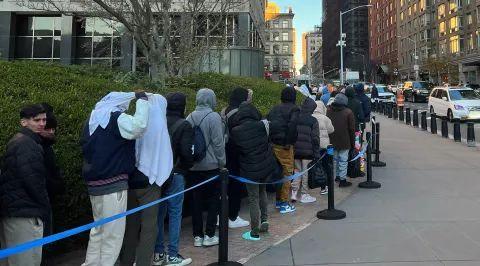Alone at the Border: Why So Many Young Men Are Migrating to Europe
By James Harcourt – Special Report
Across Europe, migration remains one of the most pressing and divisive issues of our time. What is striking about recent flows is not only the volume, but also the demographic: the overwhelming presence of young men, often aged 20 to 40, arriving without wives, children, or older family members.
The picture cuts against the familiar humanitarian narrative of families fleeing war zones. Instead, across airports, train stations, and reception centers, the arrivals are overwhelmingly male — fit, young, and traveling alone.
Who Are These Men?
Data from the European Union’s asylum monitoring bodies consistently show that men in their twenties and thirties make up the majority of arrivals from North Africa, the Middle East, and parts of South Asia. Officials say many are fleeing conflict or economic collapse, while others are sent by their families to earn money abroad.
“They are the ones most likely to survive the journey,” explains one NGO worker in Italy. “Crossing the Mediterranean or trekking across the Balkans is too dangerous for small children or elderly parents.”
Still, the concentration of “battle-age” men raises questions about the pressures and motives driving this trend.
The Housing Question
The optics have become a flashpoint. With housing shortages biting in cities like London, Paris, Berlin, and Rome, images of new arrivals living in hotels — and in some cases former luxury resorts — provoke anger.
Officials insist these placements are temporary stop-gaps. “When hundreds arrive in a single week, you use whatever accommodation is available,” one German state representative told us. But for locals struggling to secure affordable housing, the contrast is galling.
Alleged Agendas
Critics and conspiracy theorists alike point to what they believe lies beneath the surface of this trend:
Demographic Shift: Some argue European governments are tacitly allowing high male migration to offset ageing populations and worker shortages, even if this reshapes the continent’s demographics.
Religious & Cultural Change: Others fear the large inflows, primarily from Muslim-majority countries, could alter Europe’s religious and cultural balance. Theories of “Islamization” and “population replacement” circulate widely in political debate.
Economic Pressure: Another view is that governments and corporations are exploiting the influx, using migrant labor to suppress wages and deepen economic dependency, leaving both migrants and locals vulnerable.
None of these claims are proven in full, but their persistence reflects a broader mistrust of how migration is being managed.
Local Resentment vs. Humanitarian Obligation
For Europeans struggling with long housing lists, soaring rents, and overstretched welfare systems, the perception that newcomers are prioritized feeds resentment. “It feels like we are second-class citizens in our own country,” says one resident of a former industrial town in northern England.
Humanitarian advocates counter that Europe has legal and moral obligations to shelter those seeking protection, regardless of nationality. “The idea that migrants are receiving ‘luxury treatment’ is a distortion,” says a UNHCR spokesperson. “These are temporary solutions in a crisis.”
The Unanswered Questions
Europe now faces a defining dilemma:
Why are migration flows dominated by men of fighting age?
Are governments transparent about their motivations in managing these flows?
And what will be the long-term consequences for Europe’s cultural and economic fabric?
For now, young men keep arriving, governments keep scrambling, and citizens keep questioning. What is clear is that migration today is not just a humanitarian story — it is one of geopolitics, economics, and contested visions of Europe’s future.
Overview
Features:
- ✍️ James Harcourt







Leave feedback about this